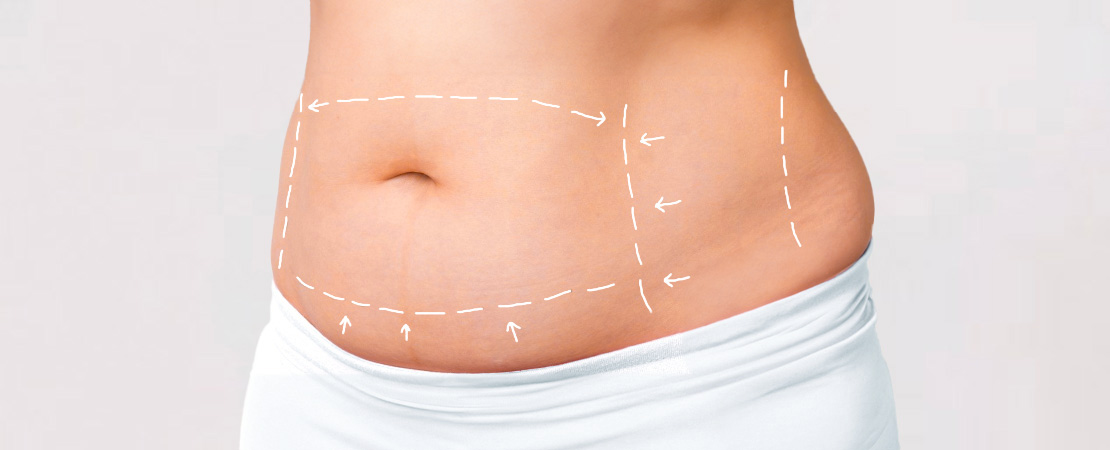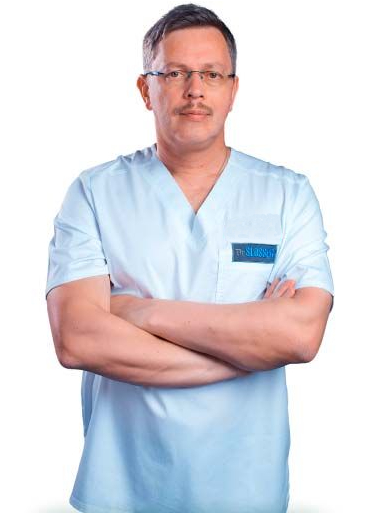Not a “magic pill” for weight loss: everything you wanted to know about abdominoplasty (tummy tuck)
Abdominoplasty, or tummy tuck, is a surgical procedure in which a plastic surgeon removes excess skin and fat from the abdominal area and tightens weakened abdominal muscles. The procedure creates a more toned appearance and can improve overall body image, especially after significant weight loss or pregnancy.
The appearance of excess and sagging skin and weakening of the abdominal wall muscles can be caused by various factors, including:
- significant weight changes;
- pregnancy (especially multiple pregnancies);
- surgical procedures in the abdominal area (e.g., cesarean section);
- age-related changes, slowing metabolism, and fat accumulation in the abdominal area;
- natural body characteristics (e.g., apple-shaped female figure).
A tummy tuck helps remove sagging skin and fat, strengthen weakened fascia (connective tissue), and improve the appearance of the abdomen.
In addition, the procedure can reduce the number of stretch marks in the lower abdomen. If the patient has a scar from a cesarean section, the plastic surgeon can connect it to a new incision from the abdominoplasty for a better aesthetic appearance.

Who is not recommended to have abdominoplasty?
Abdominoplasty should definitely not be considered as a quick way to lose weight. If the patient's body mass index exceeds 30 or he/she plans to lose a significant amount of weight after the operation, a qualified plastic surgeon will refuse to perform this procedure.
The patient must first lose weight to the level that doctors have determined to be optimal for their height and body type, establish a healthy diet, and only then come in for a consultation with a plastic surgeon. It is important to understand that the best results are achieved with a stable weight for at least 12 months prior to surgery.
Abdominoplasty is also not recommended for women who intend to become pregnant in the future, as this may partially negate the results of the operation.
How do I prepare for abdominoplasty?
Before the operation, you must come for a consultation with a plastic surgeon. The doctor will review your medical history, including any previous surgeries and medications you are taking. Then they will examine your abdomen to assess the condition of your skin and muscles. The doctor will give you realistic expectations about the results and explain the possible limitations and risks. Next, if you agree to the surgery, you will need to undergo all the necessary tests prescribed by the plastic surgeon.
How is abdominoplasty performed?
The surgery itself usually lasts 2-3 hours and is performed under general anesthesia. It usually proceeds in the following sequence:
1. Incision and skin removal: The plastic surgeon makes a horizontal incision between the navel and the pubic line to remove excess skin and fat.
2. Fascia tightening: the connective tissue above the muscles is tightened with sutures to strengthen the abdominal wall.
3. Navel relocation: the surgeon creates a new navel and sutures it in its natural position.
4. Suturing the incision: the suture is usually placed along the bikini line for minimal visibility.
How does recovery after abdominoplasty occur?
After a tummy tuck, you will need to follow all of your plastic surgeon's recommendations for a quick and safe recovery. Your doctor will prescribe the necessary medications, including antibiotics and pain relievers. Special drainage tubes are usually placed at the incision site to drain fluid.
Avoid sudden movements and bending over to prevent damage to the stitches. A support bandage should be worn for 6 weeks to support the operated abdomen and prevent swelling.
After abdominoplasty, your abdomen will be tighter and slimmer. The results are usually stable if you maintain a stable weight and follow a healthy lifestyle. However, significant weight loss or gain after the procedure can affect the results.
So, a tummy tuck is an effective way to improve body contours, remove excess skin, and strengthen the abdominal wall. The procedure helps restore self-confidence and create a more attractive silhouette for both women and men.
Contact me
Plastic surgeon
Ukraine, Kyiv, Shchekavytska St., 9a
(Clinic "Nove Tilo")


